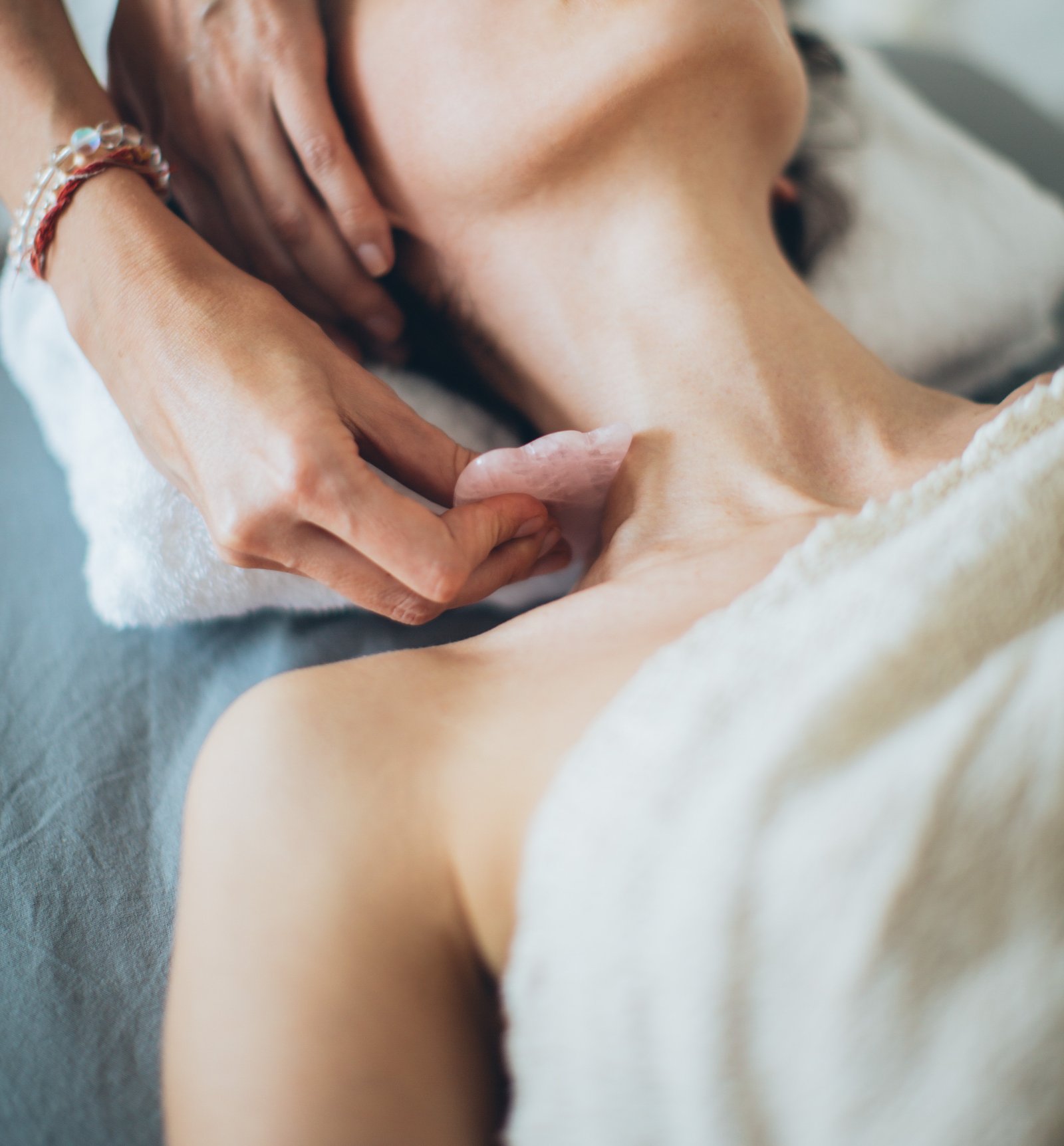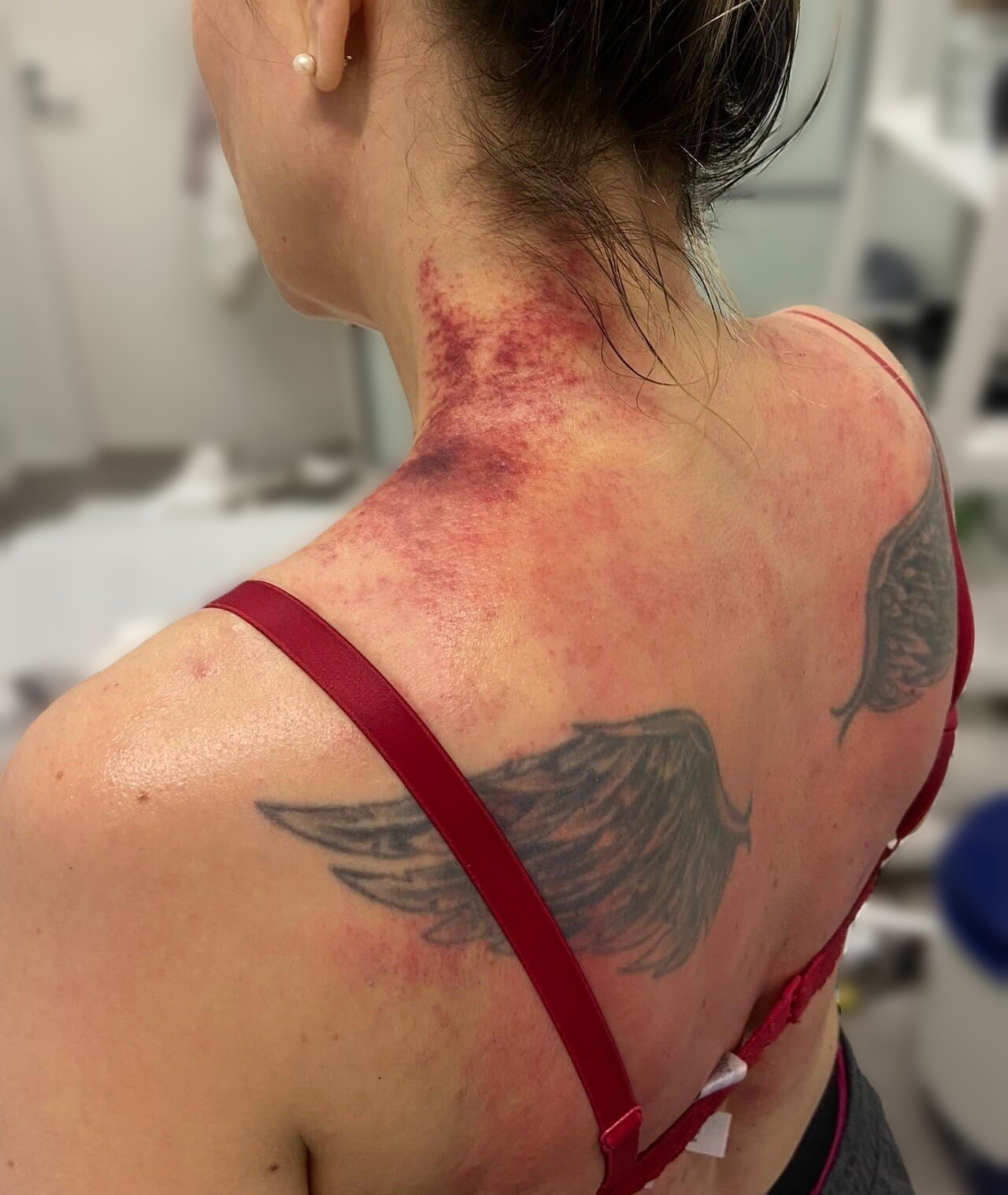Gua sha is an ancient Chinese healing technique that involves gently scraping the skin with a specialized tools to stimulate blood circulation and promote lymphatic drainage. It is often used to relieve muscle tension, reduce inflammation, improve posture, fixing chronic pain or injury and promote healing. In this treatment we treat fascia tissue, and the most fascinating part of fascia is its role in emotional stress and trauma, because trauma will get stuck and stored in the fascia. By treating this area any stored emotions from trauma in that fascial restriction can be released resulting in less pain and an overall sense of lightness once the heavy weight of that trauma is gone.
Connective tissue, also known as fascia, is a network of tissue that runs throughout the body and supports all our body’s tissues including nerves, blood vessels, organs, bone, muscle, and brain tissue. When we experience trauma or stress, our fascia becomes restricted by the sticky ground substance that surrounds it, preventing it from gliding freely. This leads to physical symptoms such as chronic pain, tension, and discomfort. Fascia can exert 2000lbs/square inch of force on pain sensitive structures.
The fascia also plays such a large role in our posture, alignment, how we move and how we feel and can also affect the production of feel-good neurotransmitters like endorphins and stress hormones like cortisol. When we talk about adhesions and knots in fascia – a lot of that is caused by inflammation so think about how the fascia is affecting inflammation in our body and how by releasing these knots we can alter inflammation in our body. This is important since inflammation is the cause of so many chronic illnesses and disease.

